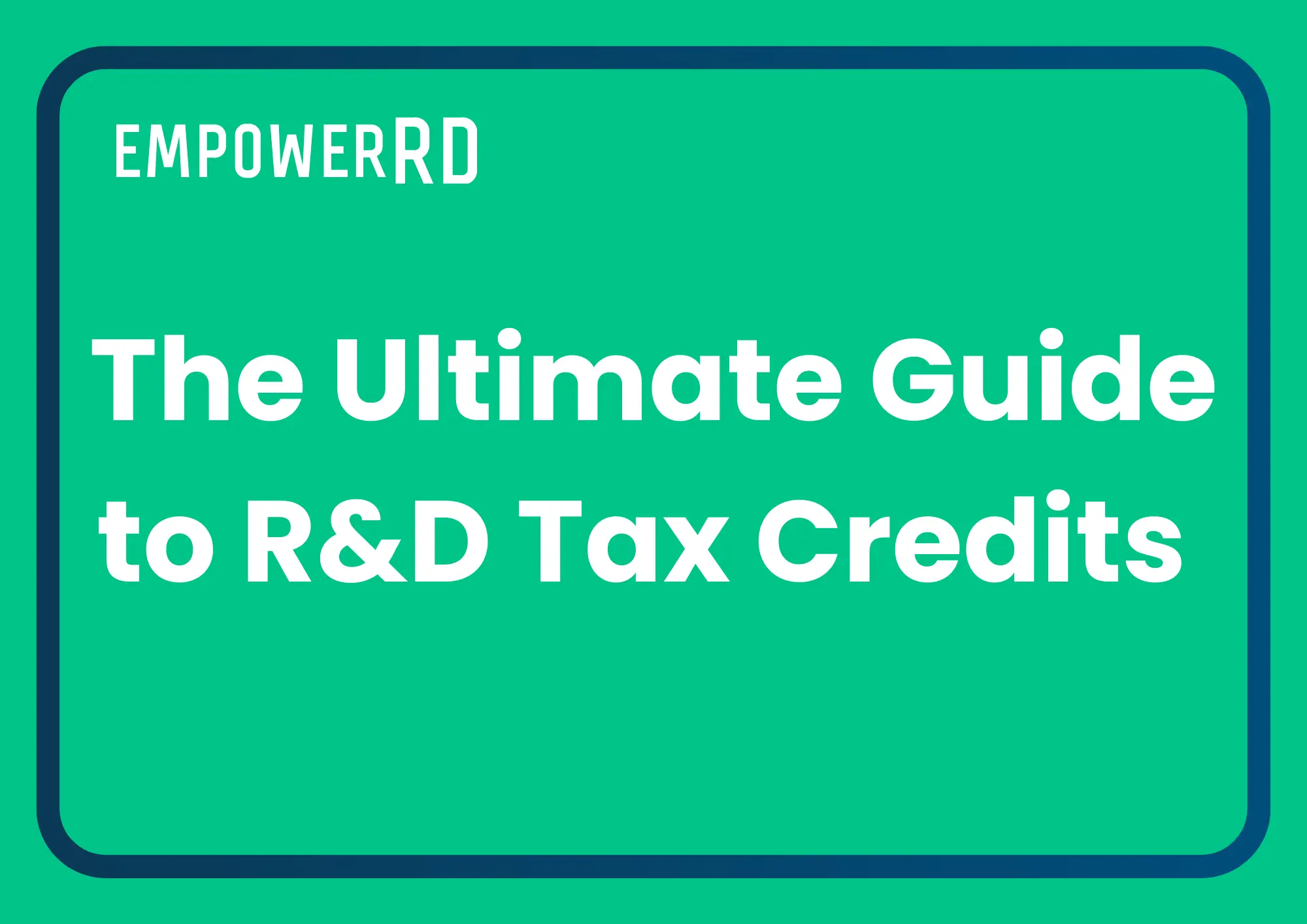The Additional Information Form (AIF) is critical for any UK business that claims Research and Development (R&D) tax relief.
For R&D tax relief, the Additional Information Form (AIF) was introduced on 8 August 2023 as HMRC’s response to the growing problem of error and fraud. Alongside your R&D claim report, it provides HMRC with the context they need to understand and justify the total qualifying expenditure for the claim period.
Since its inception, companies have been required to provide HMRC with more detailed information about their R&D projects and qualifying expenditure. The Additional Information Form is required as part of every R&D claim, whether you’re using the merged R&D scheme, ERIS, SME or RDEC.
In this article:
What is the Additional Information Form (AIF)?
The Additional Information Form (AIF) is now a mandatory part of the R&D tax claim process. HMRC introduced the AIF as part of a package of reforms in 2023 to improve compliance and reduce error and fraud in the scheme. The Additional Information Form contains supplementary information that you’ll need to provide to support your R&D claim benefit.
Don’t confuse the Additional Information Form with a PDF file that you attach to your CT600! The AIF is an online claim report that’s integrated into HMRC’s systems. HMRC will now reject any claim that’s submitted without an AIF. You’ll need to complete the Additional Information Form before submitting your Company Tax Return.
The AIF comprises several fields that you’ll need to complete and submit to HMRC. It provides a structured framework for the information you’ll need to provide to support your claim. You’ll also have the option to provide extra information not covered in the AIF e.g. through the claim report.
Remember that submitting the AIF does not constitute an R&D claim. You’ll still need to submit the CT600 to claim the benefit formally. You should tick box 657 of the CT600 to confirm that the AIF has been submitted.
Who needs to complete the Additional Information Form (AIF)?
Every company claiming R&D tax relief, regardless of the scheme (SME, RDEC or the merged scheme), needs to complete an Additional Information Form. This applies to all claims made on or after 8 August 2023. There are no exemptions – HMRC wants every company to complete the AIF as part of the R&D claim process.
What information do I need to provide in the AIF?
Within the Additional Information Form, you’ll need to provide HMRC with specific information, organised into the following categories:
Company Details
This section covers basic company information:
- Unique Taxpayer Reference (UTR)
- Employer PAYE reference number
- VAT registration number
- Standard Industrial Classification (SIC) code
Contact Details
This section helps HMRC identify key personnel involved in the R&D claim:
- The main internal R&D contact for the claim.
- Details of any agents involved in the R&D claim (e.g., tax advisors or consultants).
Accounting Period
Start and end dates of the accounting period for the claim. This must match the Company Tax Return.
R&D Intensity Details
- If you incurred expenditure on or after 1 April 2023, you’ll need to provide details of relevant R&D and total relevant expenditure.
- If your accounting period starts on or after 1 April 2024, you must demonstrate that you meet the updated intensity threshold and loss-making criteria.
Qualifying Expenditure
This section is where you’ll detail the costs you’ve incurred that qualify for R&D tax relief. Make sure you provide a breakdown of all qualifying expenditure, including:
- Cloud computing costs
- Consumables
- Data licenses
- Externally provided workers
- Clinical trial payments
- Software
- Staff costs
- Subcontractor costs
Qualifying Direct Activities (QDA) and Qualifying Indirect Activities (QIA)
You’ll need to provide details of the qualifying direct activities (QDA) and qualifying indirect activities (QIA) carried out during the accounting period.
Qualifying Direct Activities (QDA)
These are specific tasks directly related to R&D that are essential to the innovation and development or improvement of products, processes or services. Examples of roles that may perform QDA include:
- Scientists
- Researchers
- Engineers
- Technicians
Qualifying direct activities include:
- Experimental research: Carrying out experiments to prove or disprove new scientific theories or technologies.
- Prototyping and testing: Creating prototypes and evaluating their feasibility for further development.
- Data collection and analysis: Gathering and analysing data to inform product or process development.
- Technical design and development: Designing new technologies or processes.
- Simulation and modelling: Using software to simulate real-world environments.
- Collaborative research: Working with other companies or institutions to find innovative solutions.
- Documentation and reporting: Recording the R&D process.
Remember that these are just some examples of qualifying activities. Your specific projects may involve different activities entirely!
Qualifying Indirect Activities (QIA)
These tasks are essential to supporting R&D projects, often carried out by non-scientific staff. Examples of roles that may perform QIA include:
- Maintenance
- Security
- Administrative and clerical support
- Finance and personnel
Qualifying indirect activities include:
- University-led student and researcher studies.
- Feasibility studies for R&D projects.
- Training directly related to R&D projects.
- Preparing R&D reports.
- Ancillary activities in support of R&D.
HMRC will be paying close attention to this area, so it’s crucial you accurately record QDA and QIA undertaken during the accounting period. Let’s not give HMRC a reason to investigate!
How many project descriptions are needed for R&D claims?
When completing the AIF, you’ll need to provide project descriptions. The number of project descriptions depends on the number of projects you’ve undertaken and the expenditure criteria. If you have multiple projects, focus on describing the ones that make up the largest proportion of your qualifying expenditure.
The number of projects you enter will determine how many you’ll need to provide additional information for in your claim. Here’s how it works:
- 1-3 projects: You’ll need to provide details for all qualifying projects, including a full breakdown of 100% of the qualifying R&D expenditure.
- 4-10 projects: Provide details for all qualifying projects that make up at least 50% of your R&D expenditure. A minimum of 3 projects must be described in full. You’ll still need to list all projects in the AIF, even if not described.
- 11-100 projects: Describe projects that make up at least 50% of your R&D expenditure. A minimum of 3 projects must be described. If your qualifying expenditure is split across many smaller projects, describe the 10 largest.
Project descriptions
In this section, you’ll need to provide additional information about your projects. As mentioned earlier, the number of projects you’ve undertaken during the accounting period will determine how many descriptions are required.
For each project description, you’ll need to provide information for the following six points:
- Main field of science or technology: Provide the primary field that your project relates to.
- Baseline level of science or technology: Describe the current state of knowledge or skills at the project’s start and the improvements you sought.
- Scientific or technological advance sought: Explain how your project would achieve the sought advance in relation to the baseline.
- Scientific or technological uncertainties: Describe the uncertainties you faced during the project.
- Methods to address uncertainties: Explain how you addressed these uncertainties.
- Tax relief claimed and amount: Identify the type of tax relief being claimed (SME, RDEC or merged) and the qualifying expenditure for each project.
Should I still submit the R&D claim report?
Definitely! While the AIF is now mandatory, it’s still crucial to submit a robust R&D claim report alongside it. Think of the AIF as a tick-box exercise, while the R&D claim report offers a narrative opportunity to provide extra context and supporting information. A claim report gives you the chance to demonstrate expertise and credibility, reducing the risk of HMRC inquiries.
Who can submit the Additional Information Form?
The Additional Information Form can be submitted by the company itself (an officer) or an agent acting on the company’s behalf, such as a tax advisor or R&D consultant.
When can I submit the Additional Information Form?
You’ll need to submit the Additional Information Form to HMRC before submitting your company’s Corporation Tax Return. Submitting the AIF late will result in your claim being rejected, and you’ll need to file an amended return.
Common mistakes to avoid when completing the AIF
- Missing information
- Inconsistent data
- Vague project descriptions
- Insufficient evidence
- Failing to address uncertainties
- Incorrect activity classification
- Submitting the AIF late
Tips for completing the AIF
- Prepare throughout the year
- Keep organised records
- Understand qualifying criteria
- Use HMRC guidance
- Get professional help
- Start early
- Take advantage of online resources
By following these tips and understanding the AIF requirements, you’ll be well on your way to a smoother and more successful R&D tax relief claim.
Looking for a trusted partner to help with your R&D tax claim?
We’re here to help. Over 1000 UK businesses trust EmpowerRD’s R&D platform and specialists to build optimized, compliant R&D tax claims.
Book a call with one of our team members to find out how we can help you.




